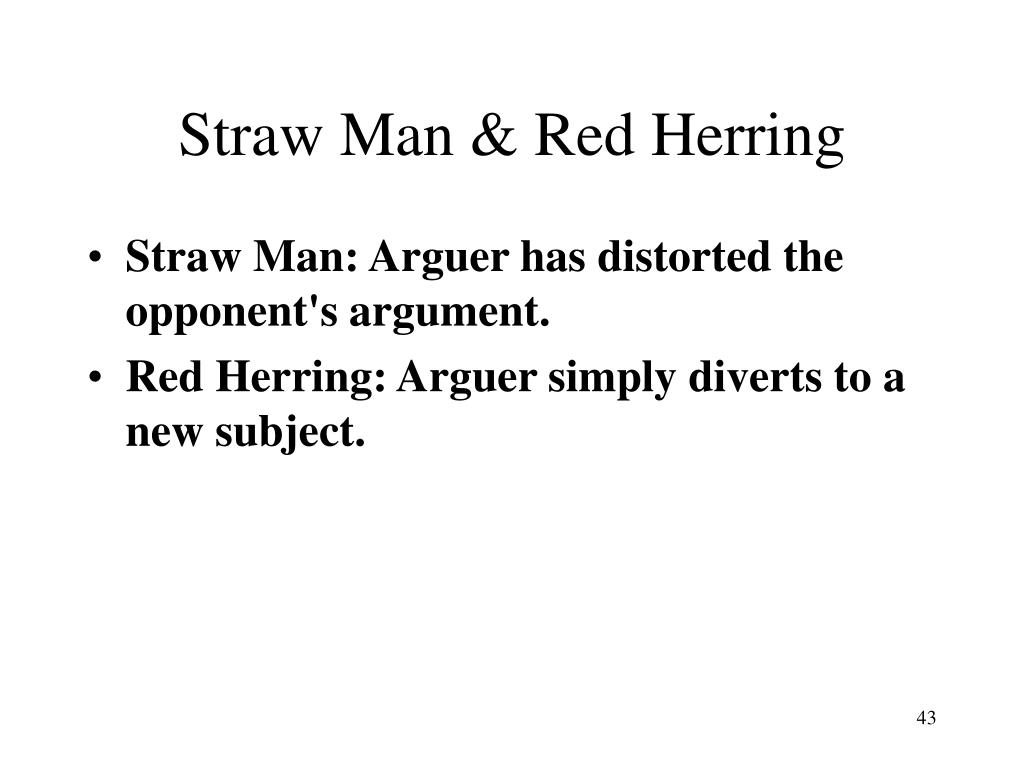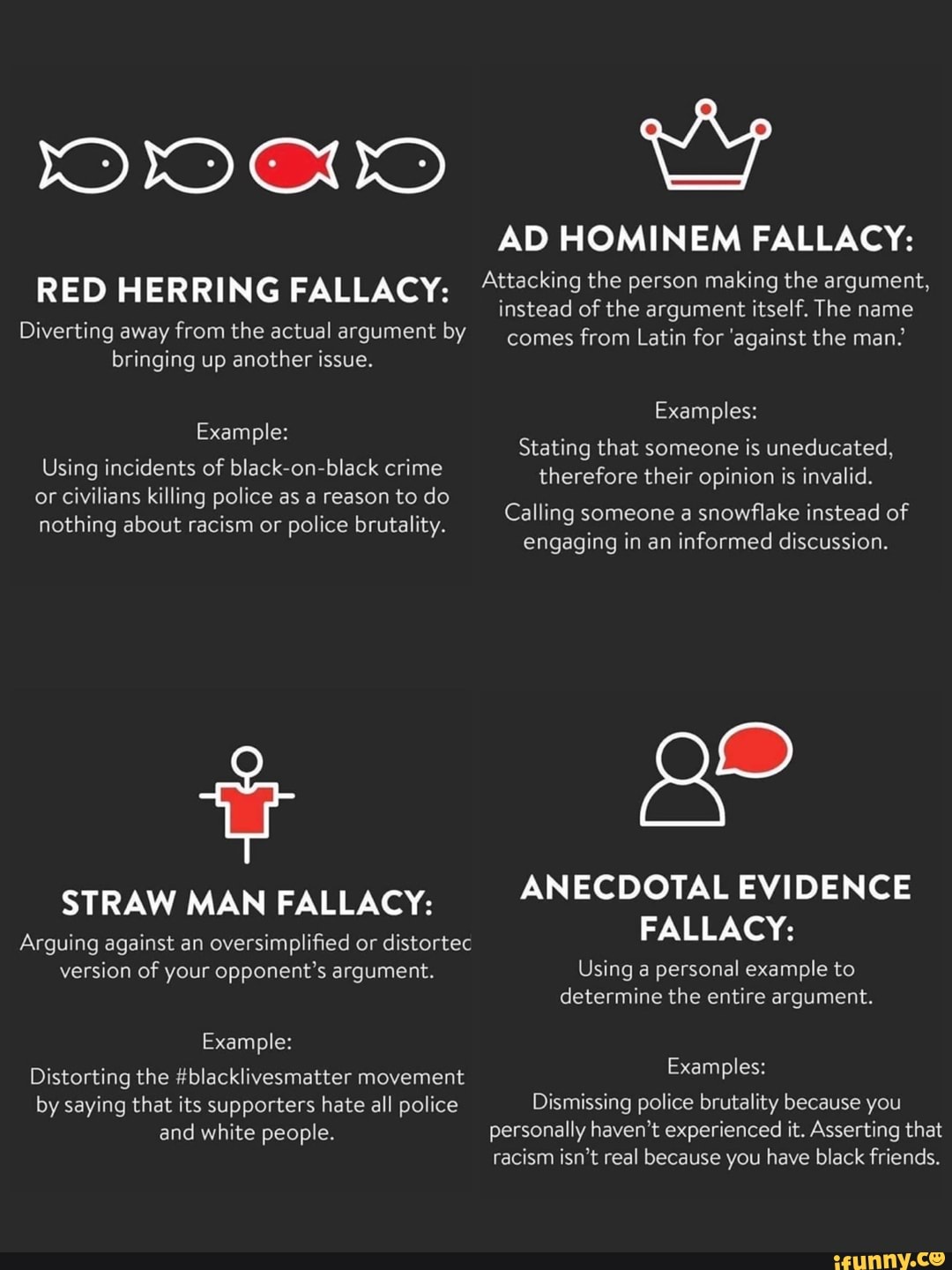
Often, advertising agencies and creators apply logical fallacies to commercials and other advertising material for businesses. The former is known as the “argument” conception of fallacy, the latter is the “belief” conception of fallacy. As the events in the commercial are improbable, the argument is fallacious.Īccording to the Stanford Encyclopedia of Philosophy, fallacies are deceptively bad arguments as well as false but popular beliefs. The commercial is both funny and unconvincing because it presents a logical fallacy: the slippery slope.
#Red herring fallacy ad tv#
Although comedic, the commercial fails to convince you to purchase the TV service. You laugh at the commercial’s absurdity as it posits the high cost of cable leaves one at risk of a gorilla’s body slam. To prevent being body-slammed by a lowland gorilla, the narrator recommends canceling cable and signing up for DIRECTV. He opens the paper to read the headlines and then, the escaped gorilla “body slams” him. The commercial cuts to the initial man picking up the paper outside of this house. Subsequently, his job is given to an inexperienced colleague who fails to notice a gorilla escape from a pen behind him. As a result of feeling down, the man shuts his curtains and stays in bed. The show reaches yet another break, and the network presents another commercial that follows an unlikely chain of events.Ī man opens an exorbitant cable bill and becomes, as the omnipresent narrator describes, down. Sitting on your couch with a bowl of popcorn in your lap, you’re watching your favorite TV show.

Some advertisements use logical fallacies to engage customers through presenting invalid or faulty reasoning to make an argument.

Advertisements deploy bandwagon, appeal to authority, false dilemma, and red herring fallacies to entertain and compel consumers.


 0 kommentar(er)
0 kommentar(er)
